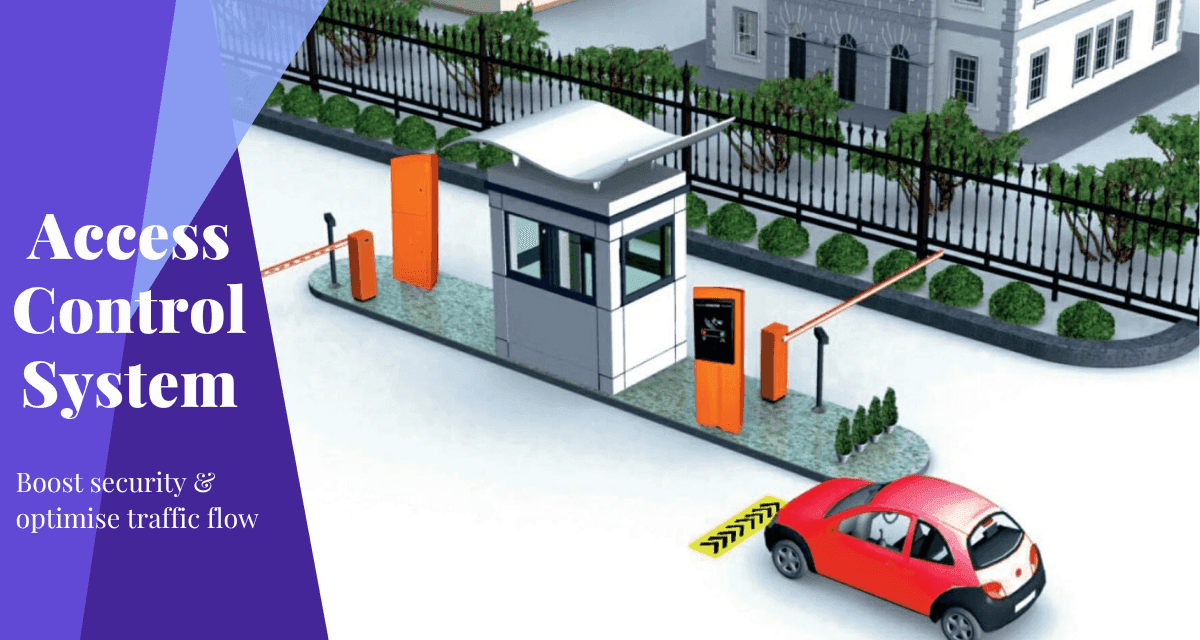We have all faced the struggle to find the perfect parking spot. Be it the case that you are headed to the city centre or simply the visit is to the local supermarket. The congestion nowadays has added to the stress of parking as well. Parking access control systems promise to bring order to the chaotic world of parking management. These systems have rapidly become essential tools for any facility that needs to control vehicle access and streamline the parking experience.
What are Access Control Systems in Parking?
Parking Access Control Systems are the solutions that monitor and control entry-exit of vehicles in a parking facility. They aim to improve on the security and efficiency of the parking space. Usually they are integrated with IoT (Internet of Things) and help keep a track of the available parking spaces as well. Any technological solution that deals with the above problems can be categorised into Access Control Systems.
Why do Access Control Systems matter?
The importance of these systems is reflected in the increasing urbanisation and less spaces available for parking more and more vehicles. Some of these include:
Boost security: Access control systems prevent unauthorised entry. Hence they protect cars and assets within the parking facility. For instance, residential complexes can ensure only residents and authorised guests have access. This significantly reduces the security risks.
Optimise traffic flow: They make the entry and exits in the parking area much faster and more organised, which leads to happier users. This is especially important for commercial parking lots during peak hours. It helps minimise congestion and wait times.
Enhance revenue management: These also help charge appropriate fees and accurately monitor payments. The use of access control systems enables seamless payment options like mobile payments or credit/debit cards.
Also Read: How Boom Barriers Enhances Security and Manages Traffic?
Components of Access Control Systems
There are a few components which are like the building blocks for the parking access control systems. These are broadly listed as under. Remember each has further types which will help you understand this in detail.
Entry Mechanisms
These deal with the entry and exits of the vehicles. Different types offered include
Gate barriers: The classic solution to control physical access. These can be upgraded with sensors for smoother operation and added security.
Licence plate recognition (LPR): Cameras capture licence plates for automated entry and exit. This technology is ideal for high-traffic areas, like airports or stadiums. These are the areas where speed is crucial.
RFID readers: Users with RFID tags or cards can access the parking facility. This system is commonly used for employee parking at office complexes or season pass holders.
Authentication Methods
Another crucial component is the authentication method. Based on the tech used, these can be classified as:
Ticket-based systems: The systems use tickets at entry and exits. These are a reliable low-tech solution for smaller parking areas.
RFID tags/cards: The RFID tags are linked to user accounts. This helps in quick payment controls. Also, added is the ease of digitalised control, payments and management.
Mobile applications: The ultimate convenience, they allow access controls via smartphone. These apps can also integrate payment options. Further they provide parking space availability information directly on your smartphone.
Enforcement Mechanisms
Another important factor is how they enforce security. The components include.
Surveillance cameras: Surveillance cameras are mostly to check for theft. But, they also help manage the parking area. These cameras can be integrated with AI-based systems for even more robust monitoring.
Payment kiosks: Payment Kiosks facilitate payment for the parking facility. They often have touchscreens and multiple payment options which add to the functionality.
Intercom systems: Intercom systems assist users with queries or issues. These help to monitor remotely and assist, especially in large facilities.
Types of Parking Access Control Systems
Parking Access Control Systems, apart from the ones discussed above, are mostly of four types. These are
Barrier Gate Systems: This is a straightforward approach that relies on physical entry and exit barriers.
Pay-on-Entry Systems: You take a ticket on entry and pay before you leave. This system is ideal for scenarios where the length of stay might vary.
Pay-and-Display Systems: Pay up front, display a receipt in your vehicle. Common for areas with street parking or smaller lots.
License Plate Recognition Systems: The most seamless of the systems. It uses cameras to manage access (often contactless). This provides enhanced data for analytics as well.
Real-World Benefits
It is very important to consider what actually are the benefits when this technology is used. Access control systems improve the overall efficiency and function of your parking facility.
- Security: Access control systems stop unwanted activities. They keep unauthorised people out. Added to this, they keep a record of who's in the parking area and when. This helps investigations if something bad happens.
Efficiency: Machines make traffic move better. For example, at a busy hospital, cameras or ID cards let staff come and go fast without waiting to pay. This comes very handy especially when shifts change.
Revenue: These systems make sure people pay the right amount. But they also can stop people when they don’t pay. Also, they offer different ways to pay and ways to pay monthly. This helps in increased revenues and profits.
Customer Satisfaction: Parking should be easy. Systems that make parking easier make customers happy. This helps businesses keep customers who use their parking lots a lot.
Where Are They Used?
Parking Access Control systems are common nowadays. Some of the use case scenarios are listed as under.
Commercial parking lots serve shopping malls, office complexes, and entertainment venues. These help to streamline the overall operations. Added to this, the revenue control improves. However, high-volume parkings can be tricky.
Residential complexes are required to keep resident parkings these days. They also need to accommodate guest parking spaces as well. Access Control Systems help organise parking. They are also responsible for enhancing security. Overall the apartment and community both benefit from these.
Hospitals have complex parking needs. Healthcare centres have complex parking needs. There is a need for Staff parking. Separate Patient parking exists along with Visitor parkings. Additionally, access control systems segment parking zones. Furthermore, access control systems manage permissions.
University campuses benefit from the parking access control systems. Furthermore, campuses have student parking zones and faculty parking zones. Apart from these, there are some common parking areas as well.
Public parking garages exist in cities. A crucial requirement of these is accurate billing. This requires diverse payment options. Moreover, tie-ins with parking spot reservation apps occur. However, the problem lies with real-time updating when someone books a parking spot online.
Challenges and Considerations
Like each thing, the access controls systems also have some challenges ahead. The common challenges that occur are listed below to help you aid better.
Integration: Ensure that the chosen access control system fits seamlessly with the parking infrastructure. These include existing ticketing machines, payment gateways etc. Integration is crucial for a smooth launch.
Maintenance: Regular maintenance and updates are essential to keep systems healthy and operate reliably. Proactive upkeep is cheaper than emergency fixes in the long-term.
User Experience: No one likes a system that's confusing or frustrating. Intuitive interfaces for both users and parking staff are critical for smooth adoption.
Data privacy: These systems collect data. Hence the need is to have a robust data privacy policy and compliance with local regulations like GDPR (Europe).
Adaptability to Future Technologies: Smart parking systems should be able to evolve with emerging technologies like IoT sensors for occupancy monitoring and integration with smart city platforms.
You may also like: Role of Boom Barriers in Managing Commercial Parking Spaces
The Future is Bright
While we have discussed the scope of these revolutionary systems, there is a long way ahead. Let us discuss some of the possibilities these technologies bring to the table.
Integration is key. The chosen access control system must fit well with existing infrastructure (ticketing machines, payment gateways, etc.).
Systems require regular maintenance and updates. Proactive upkeep prevents costly emergency fixes in the future.
User experience is important. Intuitive interfaces for users and staff ensure smooth adoption of the system.
These systems collect data. A robust privacy policy and compliance with regulations like GDPR are essential.
Smart parking systems should adapt to future technologies. This includes IoT sensors that monitor and integrate with smart city platforms.
Conclusion
Access control systems are indispensable for modern parking management. If one understands these thoroughly, organisations can select the best solution for their specific needs. As parking technology weaves seamlessly with smart city infrastructure and the power of AI, it's an exciting space to watch in the years to come. Stay connected with Park+ for more such parking based solutions.

